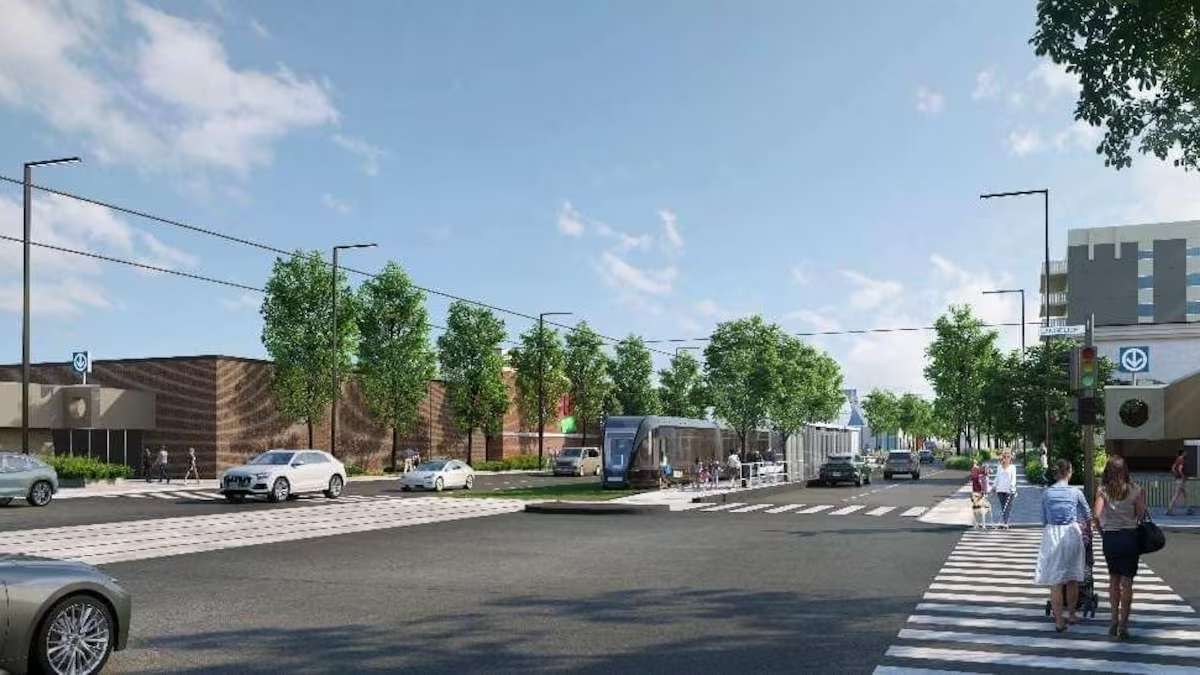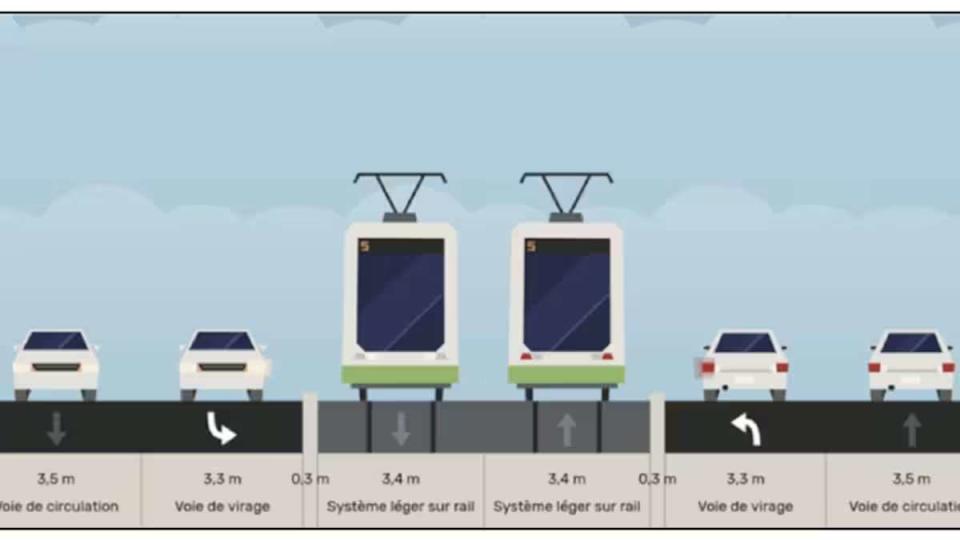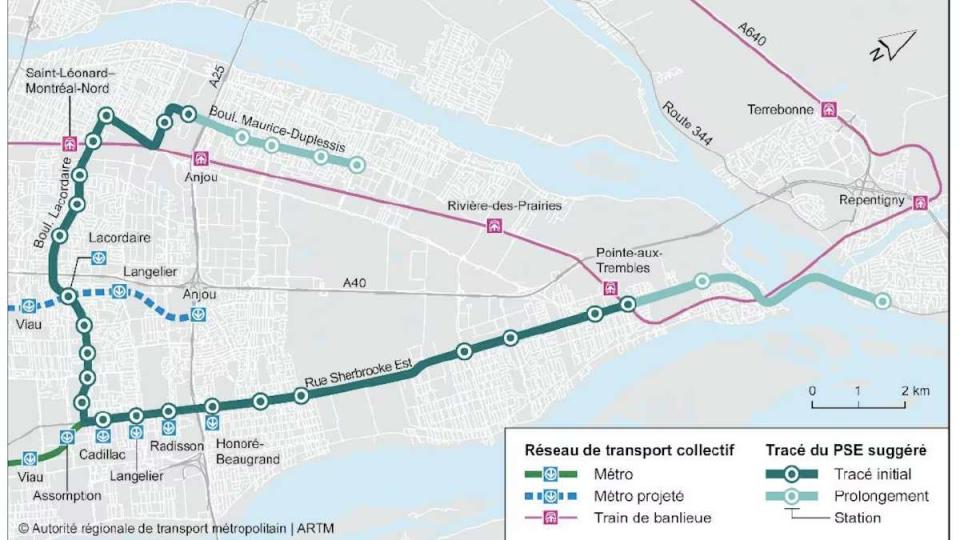Regional transit agency proposing ground-level rail line to serve eastern Montreal

Building an elevated, electric commuter train to eastern Montreal was panned by residents, and a more recent proposal to go underground had a cost so high, Quebec's premier said he "almost choked" on his coffee.
So the region's transit authority, the Autorité régionale de transport métropolitain (ARTM), is now proposing a rail line at ground level, with the first phase covering 21 kilometres with 22 stations.
The cost? A mere $10.4 billion, which is considerably lower than the ARTM's fully underground proposal in June 2023. That project would have cost at least $36 billion.
The ARTM has released a report that it will soon submit to Transport Minister Geneviève Guilbault — a report that explores the possibility of constructing a tramway-like public transit service stretching into eastern Montreal, where transportation options are limited.
The possibility of creating a light-rail system or something in-between a Metro and tramway is not being ruled out, the report says.

The ground-level rail line would take up lane space roughly the same size of car lanes. (Submitted by the ARTM)
The REM de l'Est project, initially led by CDPQ Infra, a subsidiary of the Caisse de dépôt et placement du Québec, was transferred to the ARTM in June 2022 due to social unacceptability of an elevated automated train.
Now, the ARTM is suggesting that stations be an average of 1,130 metres apart, enabling speeds between 27 and 31 km/h.
In the first phase, 22 stations would span from Cégep Marie-Victorin in Montréal-Nord to Pointe-aux-Trembles station. The Projet structurant de l'Est (PSE) would follow the Lacordaire-Dickson axis on the northern branch, then Sherbrooke Street for the eastern branch.
Two network extensions are planned for later phases. Four additional stations along Maurice-Duplessis Boulevard would connect the northern branch to Rivière-des-Prairies.
Two more stations on the eastern branch would extend the PSE to l'Assomption in Lanaudière, east of Montreal. Adding these two extensions would increase the total cost to $13 billion.
When asked about this proposal, Guilbault's spokesperson said the minister prefers to wait for the report and analyze it before commenting.
However, the spokesperson reiterated the government's commitment to developing a public transit system that serves the east.

The ARTM has designed a map indicating where the ground-level rail line would serve. (Submitted by the ARTM)
The northern branch of the PSE would provide connections to two Montreal Metro lines. Connection to the Blue line would occur at Lacordaire station (one of the five stations planned for the ongoing extension project, expected to be completed by 2030).
Cadillac station is the first Metro station on the Green line for passengers coming from the north.
According to the ARTM, 36 per cent of passengers would transfer there to head west. The PSE would then continue along Sherbrooke Street East, a few metres above the Green line. Over approximately 2.5 kilometres and four stations, up until Honoré-Beaugrand station, the two networks would run in parallel.
Currently, it takes 26 minutes during peak hours to travel by bus from Pointe-aux-Trembles station to Honoré-Beaugrand station. The PSE would reduce this to 16 minutes.
On the northern branch, the savings would be greater. From the current 42 minutes between Cégep Marie-Victorin and Cadillac station, travel time would be reduced to 20 minutes.
Overall, the ARTM estimates that the PSE would facilitate between 23,300 and 27,600 trips daily, with passenger traffic originating almost equally from the north (42 per cent) and east (38 per cent).
According to projections, one out of six passengers (17 per cent) would opt to leave their car in favor of this new public transport mode."


